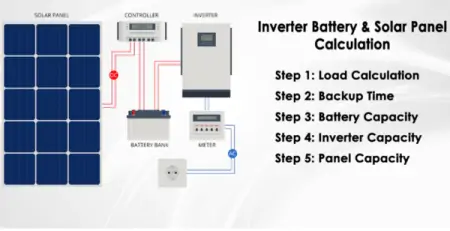What are the Latest Advancements in Solar Panel Technology
The world is embracing renewable energy sources at an unprecedented rate, with solar power leading the charge. Solar panels, also known as photovoltaic (PV) panels, have become the cornerstone of harnessing solar energy. The advancements in solar panel technology have revolutionized the industry, making solar power a viable and sustainable energy option for a wide range of applications. In this article, we will explore the latest advancements in solar panel technology and how they are impacting the industry.
Solar panel technology involves the conversion of sunlight into electricity through the use of solar cells. These panels are composed of several photovoltaic cells that generate direct current (DC) electricity when exposed to sunlight. This clean and renewable energy source has gained popularity due to its numerous environmental and economic benefits.
Advancements in Solar Panel Technology
High-Efficiency Solar Cells
One significant advancement in solar panel technology is the development of high-efficiency solar cells. Traditional silicon-based solar cells have an average efficiency of around 15-20%, but recent innovations have pushed this limit to over 25%. High-efficiency solar cells, such as monocrystalline and multi-junction cells, maximize electricity generation, making them ideal for space applications and installations with limited roof space.
Perovskite Solar Cells
Perovskite solar cells have emerged as a promising alternative to traditional silicon-based cells. These cells are made from a unique class of materials called perovskites, which are inexpensive and easy to manufacture. Perovskite solar cells offer high efficiency and can be manufactured using low-cost printing techniques, enabling scalable production and reducing the overall cost of solar panels.
Bifacial Solar Panels
Bifacial solar panels are designed to capture sunlight from both the front and back sides of the panel. Unlike traditional solar panels that only utilize the front side, bifacial panels increase energy generation by utilizing reflected sunlight from the surroundings. This innovative design boosts overall system efficiency, making bifacial panels an attractive choice for large-scale solar installations.
Flexible Solar Panels
Flexible solar panels are revolutionizing the solar industry by offering versatility and convenience. These panels use lightweight and flexible materials, such as thin-film solar cells, that can be integrated into various applications. Flexible solar panels can be curved or molded, making them ideal for irregular surfaces like vehicles, backpacks, and wearable devices.
Transparent Solar Panels
Transparent solar panels represent a breakthrough in solar panel technology. These panels have the ability to generate electricity while maintaining transparency, making them suitable for windows, skylights, and other transparent surfaces. They utilize technologies like transparent conductive coatings and thin-film solar cells to capture sunlight without compromising visibility. Transparent solar panels have the potential to revolutionize architecture and urban design by seamlessly integrating solar power generation into buildings.
Solar Panel Coatings
In recent years, the development of advanced coatings for solar panels has gained attention. These coatings serve multiple purposes, such as enhancing light absorption, reducing reflection, and improving durability. Anti-reflective coatings, for example, minimize the loss of incoming sunlight and increase overall efficiency. Additionally, self-cleaning coatings can prevent dust and dirt buildup on the panels, ensuring optimal performance.
Solar Panel Tracking Systems
Solar panel tracking systems have emerged as an effective solution to maximize energy generation. These systems allow solar panels to follow the sun’s path throughout the day, optimizing the angle of incidence and increasing the amount of sunlight captured. By constantly adjusting the panel’s position, tracking systems can significantly boost energy output, especially in areas with varying sunlight angles.
Energy Storage Solutions
The integration of energy storage solutions with solar panels has become a game-changer for the industry. Energy storage technologies, such as lithium-ion batteries and flow batteries, enable the storage of excess solar energy generated during the day for use during the night or when sunlight is insufficient. This advancement has greatly improved the reliability and effectiveness of solar power systems, making them more viable for off-grid applications and reducing dependence on the electrical grid.
Impact on the Solar Panel Industry
The latest advancements in solar panel technology have had a profound impact on the industry. Let’s explore some of the key implications:
Increased Energy Generation
High-efficiency solar cells, bifacial panels, and improved coatings have significantly increased energy generation. The advancements allow solar panels to capture more sunlight and convert it into electricity, resulting in higher power output and improved system performance. This increased energy generation is instrumental in meeting the growing global demand for renewable energy.
Cost Reduction
The ongoing advancements in solar panel technology have led to cost reductions across the board. The development of perovskite solar cells and flexible solar panels has introduced low-cost manufacturing methods, making solar energy more affordable. Furthermore, improved efficiency translates to higher energy production per unit area, reducing the number of panels required for a given installation and further lowering costs.
Improved Aesthetics and Design
Traditionally, solar panels were primarily associated with rooftop installations and were often considered aesthetically unappealing. However, with the introduction of transparent and flexible solar panels, the industry has witnessed a shift towards more visually appealing designs. Transparent solar panels can blend seamlessly into building facades, while flexible panels offer greater design flexibility and integration possibilities.
Expansion of Applications
The latest advancements have expanded the applications of solar panels beyond traditional rooftop installations. Flexible panels can be integrated into various surfaces, opening up possibilities for solar-powered vehicles, portable chargers, and even clothing. Transparent solar panels have the potential to transform windows, skyscrapers, and public infrastructure into energy-generating assets. This diversification of applications increases the reach and impact of solar panel technology.
Environmental Benefits
Solar panel technology plays a crucial role in reducing greenhouse gas emissions and combating climate change. By harnessing the power of the sun, solar panels generate clean and renewable electricity, eliminating the need for fossil fuel-based energy sources. The increased adoption of solar energy helps reduce reliance on non-renewable resources and contributes to a greener and more sustainable future.
Market Growth and Job Opportunities
The advancements in solar panel technology have fueled market growth and created numerous job opportunities. As the demand for solar panels continues to rise, the industry requires skilled professionals for installation, maintenance, and research and development. This growth not only contributes to economic development but also promotes the transition to a clean energy economy.
Challenges and Future
Despite the significant advancements, solar panel technology still faces certain challenges that need to be addressed for its continued growth and widespread adoption. Some of these challenges include:
Limitations and Challenges Faced
- Efficiency limitations: While the efficiency of solar panels has improved, there is still room for further enhancement. Research is ongoing to overcome efficiency limitations and develop more cost-effective solutions.
- Energy storage: Although energy storage solutions have improved, there is a need for more efficient and affordable storage technologies to ensure a reliable power supply during periods of low sunlight or at night.
- Scalability: As the demand for solar panels increases, there is a need for scalable manufacturing processes and supply chains to meet the market’s needs.
- Environmental impact of manufacturing: The manufacturing process of solar panels involves certain environmental impacts, such as energy consumption and waste generation. Innovations in manufacturing techniques and materials can help minimize these effects.
Potential Solutions and Ongoing Research
Researchers and scientists worldwide are actively working on addressing these challenges and advancing solar panel technology. Ongoing research includes:
- Development of new materials: Researchers are exploring new materials and manufacturing techniques to improve the efficiency and durability of solar cells. This includes the use of nanotechnology and perovskite materials.
- Energy storage advancements: Efforts are underway to develop more efficient and cost-effective energy storage solutions, such as next-generation batteries and advanced supercapacitors.
- Integration with other renewable technologies: The integration of solar panels with other renewable energy technologies, such as wind turbines, can provide a more reliable and efficient power generation system.
- Increased focus on sustainable manufacturing: Manufacturers are investing in sustainable practices to reduce the environmental impact of solar panel production. This includes the use of recycled materials and the adoption of energy-efficient manufacturing processes.
Forecast for the Future of Solar Panel Technology
The future of solar panel technology is promising. With ongoing advancements and research, it is expected that solar panels will continue to evolve and become even more efficient, affordable, and versatile. Here are some key forecasts for the future:
- Higher efficiency: Researchers are pushing the boundaries of solar cell efficiency, aiming to achieve new records and increase the energy generation potential of solar panels.
- Integration with smart grids: Solar panels will be integrated with smart grid technologies, enabling better management and distribution of renewable energy resources.
- Increased energy storage capacity: Energy storage solutions will become more advanced and cost-effective, allowing solar panels to store excess energy for longer durations.
- Enhanced durability and lifespan: Innovations in materials and manufacturing techniques will result in more durable solar panels with longer lifespans, reducing maintenance requirements.
- Integration into building materials: Solar panels will be seamlessly integrated into building materials, enabling energy generation without compromising aesthetics or functionality.
In conclusion, the latest advancements in solar panel technology have transformed the industry and paved the way for a sustainable energy future. These advancements have led to increased energy generation, cost reduction, improved aesthetics, and the expansion of applications. Despite the challenges, ongoing research and development efforts provide an optimistic outlook for the future of solar panel technology, with higher efficiency, improved energy storage, and seamless integration into our daily lives.
FAQs
1. Can solar panels work during cloudy days?
Yes, solar panels can still generate electricity on cloudy days. While their efficiency may be slightly reduced, they can still produce a significant amount of power.
2. Are solar panels expensive to maintain?
Solar panels generally require minimal maintenance. Occasional cleaning to remove dust and debris and regular inspections to ensure optimal performance are usually sufficient.
3. How long do solar panels last?
Most solar panels come with a warranty of 25 to 30 years, but they can last even longer with proper care and maintenance. Their performance gradually decreases over time, but they continue to generate electricity for many years.
4. Can solar panels be used in residential homes?
Yes, solar panels are commonly used in residential homes. Many homeowners choose to install solar panels on their rooftops to generate clean and renewable energy for their household needs.
5. Are there any government incentives for installing solar panels?
Yes, many governments around the world offer incentives and subsidies to encourage the adoption of solar panels. These incentives can include tax credits, grants, or feed-in tariffs, making solar panel installations more affordable for homeowners and businesses.
The latest advancements in solar panel technology have revolutionized the industry, making solar energy an increasingly viable and sustainable option. With high-efficiency solar cells, perovskite technology, bifacial panels, and flexible and transparent designs, solar panels are more efficient, versatile, and aesthetically appealing than ever before.
These advancements have led to increased energy generation, cost reduction, improved aesthetics, and expanded applications. Despite the challenges faced, ongoing research and development efforts are expected to drive further innovation and improve the efficiency, durability, and integration of solar panels in the future. By harnessing the power of the sun, solar panel technology is playing a vital role in the transition towards a greener and more sustainable energy future.




